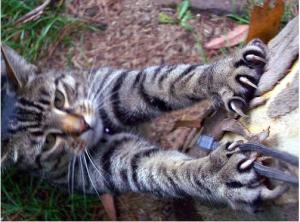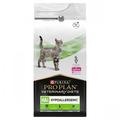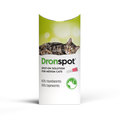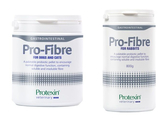Cat scratching is a bothersome habit that can have us clawing at the walls trying to stop! Of course we know it’s a natural behaviour but that doesn’t stop us wanting to discourage it, or at least, contain where it happens in the home.
Favourite pieces of furniture are a cat’s best friend along with carpets, stair banisters and a range of other rough, wooden or textured objects, which, actually, we might not want being defaced or clawed. It can be upsetting finding cherished items scratched and shredded no matter how natural the reason for it, and as a pet parent it is worth taking measures to prevent this sort of damage from happening. Still, it is important to remember that cats will always scratch to some extent and there is just no subduing it completely.
Cats scratch out of instinct and, rather than trying to curb the behaviour altogether, it is better finding ways to facilitate their scratching that benefits both your cat and your furniture. Scratching is actually very important for a cat’s well-being, so, in the right places, it should be promoted and praised. If cats are not provided their personal areas to indulge in scratching, they will turn their attentions to just about anything that is tough enough to withstand them!
There are many reasons why cats scratch and their tendency to do so is perfectly natural. If you think your cat is scratching excessively though, it could be a sign of anxiety or insecurity and it might be worth seeking the advice of your vet. However, if you feel there is nothing out of the ordinary then your cat is probably just displaying classic signs of wanting to mark its territory, condition its claws and stretch out the length of its body.
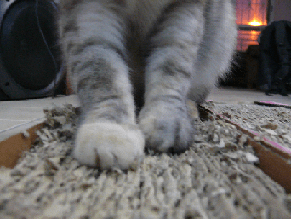 When cats scratch, the outer layer or ‘husk’ is shed, allowing for re-growth. They also have the opportunity to stretch out, arching their backs and flexing their feet and claws. Most cats will scratch after they have eaten or slept, probably because they have been ‘cooped up’ for a period of time and need an outlet through which to extend themselves. Scratching is also central to play in multi-cat households and may be a way of communicating dominance to other cats.
When cats scratch, the outer layer or ‘husk’ is shed, allowing for re-growth. They also have the opportunity to stretch out, arching their backs and flexing their feet and claws. Most cats will scratch after they have eaten or slept, probably because they have been ‘cooped up’ for a period of time and need an outlet through which to extend themselves. Scratching is also central to play in multi-cat households and may be a way of communicating dominance to other cats.
So, now we know why cats scratch, let’s think about ways to reduce and re-focus it. Besides the obvious benefit of scratching posts (offering a distraction from furniture legs, for one thing), there are a number of equally simple measures to prevent bothersome scratching at home. Regular nail trimming is a great place to start, as cats have an instinctual need for this and the shorter the nails, the less damage to be wrought on your favourite things. Be sure to only trim the tip of the nail as any more could injure your cat and hinder its ability to scratch at all.
Keeping your cat mentally stimulated also has its benefits, as a content cat with plenty to occupy itself will be less inclined to scratch up furniture. This is particularly important for house cats that might not have company during the day or the space to exercise.
Having scratching posts dotted around the home is great so that wherever your cat happens to be there is always somewhere for it to indulge. Infusing them with catnip or placing the herb at the top for your cat to reach for will encourage its attentions, while the use of deterrents on furniture and other prohibited items (bitter apple spray, orange peels and even vinegar are good options) will stop your cat from venturing there with its claws.
As cats tend to scratch more after they have had a meal or taken a nap, placing posts in the areas where this happens will help contain the scratching to certain parts of the house. If your cat is then praised for using these areas it will come to associate them with feelings of happiness and reward. If your cat deviates, a firm 'NO' or a squirt from a water bottle will give a clear message that these are not acceptable places to be scratching. As it is a perfectly natural behaviour, punishing your cat for doing so will only confuse and upset it, making it more likely to scratch through anxiety.
Change and upheaval can cause stress in cats and simple things such as new furniture, increased cleaning or domestic DIY can lead to misbehaviour. Understanding that your cat's scratching is an instinctive and emotional response to an environmental trigger, rather than a deliberate attempt to sabotage your home, is very important. Being consistent with your tone and body language, and praising your cat when it uses its scratching post correctly, will reinforce what is acceptable.
 Of course, if scratching is bad enough that simple deterrent sprays and conditioning won't stop it, it might be time for more extreme measures. Covering your furniture with something that 1) is not going to damage it and 2) is unpleasant for your cats, especially when they are left home unattended, is the surest way of protecting your house from unwanted scratching.
Of course, if scratching is bad enough that simple deterrent sprays and conditioning won't stop it, it might be time for more extreme measures. Covering your furniture with something that 1) is not going to damage it and 2) is unpleasant for your cats, especially when they are left home unattended, is the surest way of protecting your house from unwanted scratching.
Cats hate things sticking to their paws, so double-sided tape is an effective solution for wrapping around furniture legs. Once a cat has sunk its claws into it, you can be sure it won't be returning for round-two! Tin foil is another good deterrent for use on furniture, skirting boards etc. as it crinkles when touched and is perfectly smooth; not the ideal surface for a feline that wants to scratch.
Better yet, try balloons! As long as you don't mind giving your cat a little scare, these are the perfect defence against unwanted visitors. Simply inflate them and leave beneath a dust/bed sheet for your cat to discover. They won't damage your furniture but they will pose a choking hazard once popped, so ensure you quickly clear up the remnants before your cat tries to eat them. Tins filled with coins or small stones will rattle when nudged so dangling them from furniture can be very effective.
VioVet sells a wide range of products for cat scratching, including a number of durable sisal scratching posts and mats, as well as rough textured cat climbers and hide-outs. The cat climbers are a brilliant idea for multi-cat households as they incorporate a number of scratching posts within an exciting multi-faceted framework, including ladders, sleeping quarters and hanging playthings to paw at. By combining everything together, your cat has its very own space to play and relax as well as a 'safe' place for scratching and clawing 'til its heart's content! To check out VioVet's complete range of cat scratching accessories, click here.
If you have any further advice for readers or have any interesting stories to share, please do so! We would love to hear them :)
Written by: Hannah
